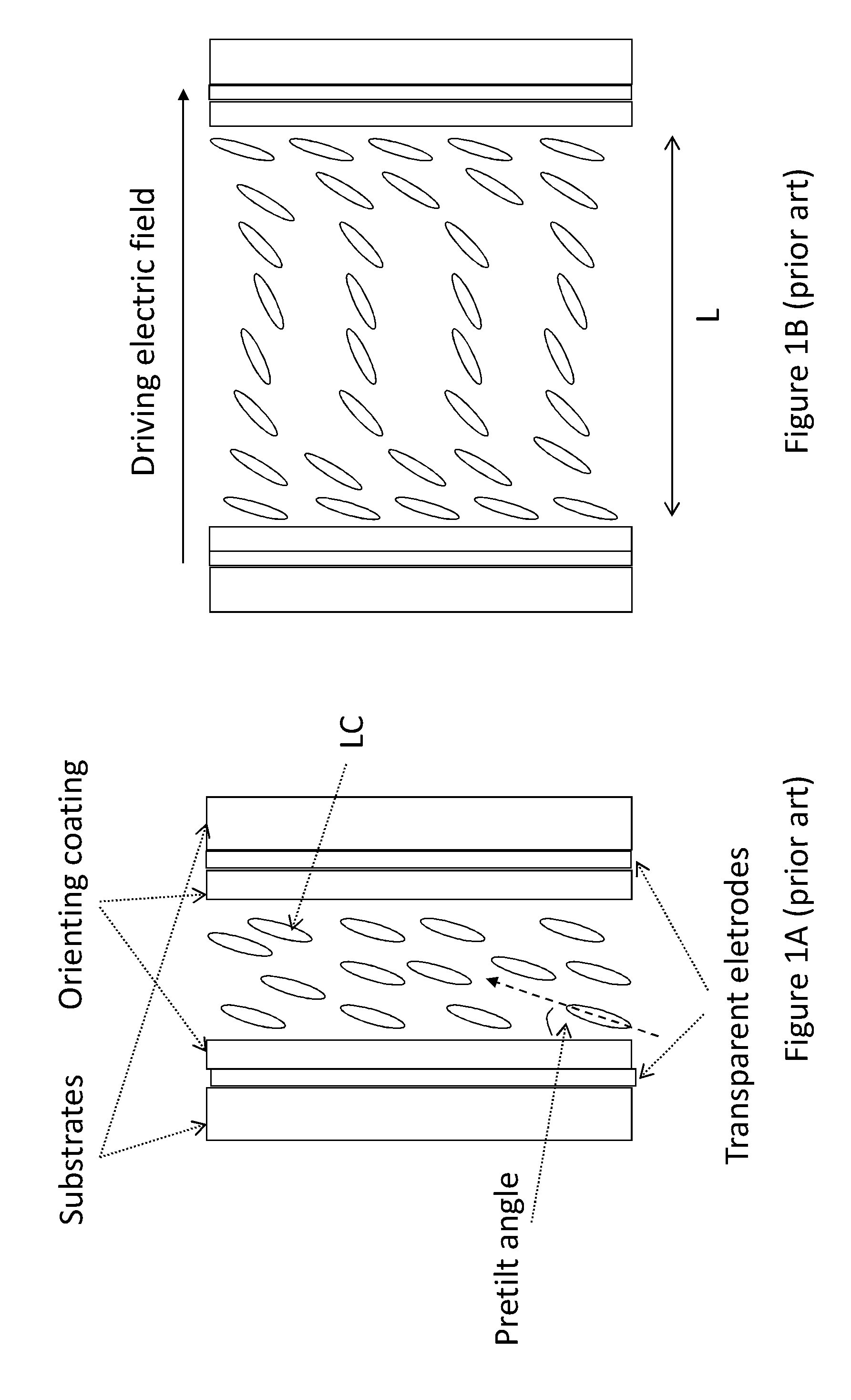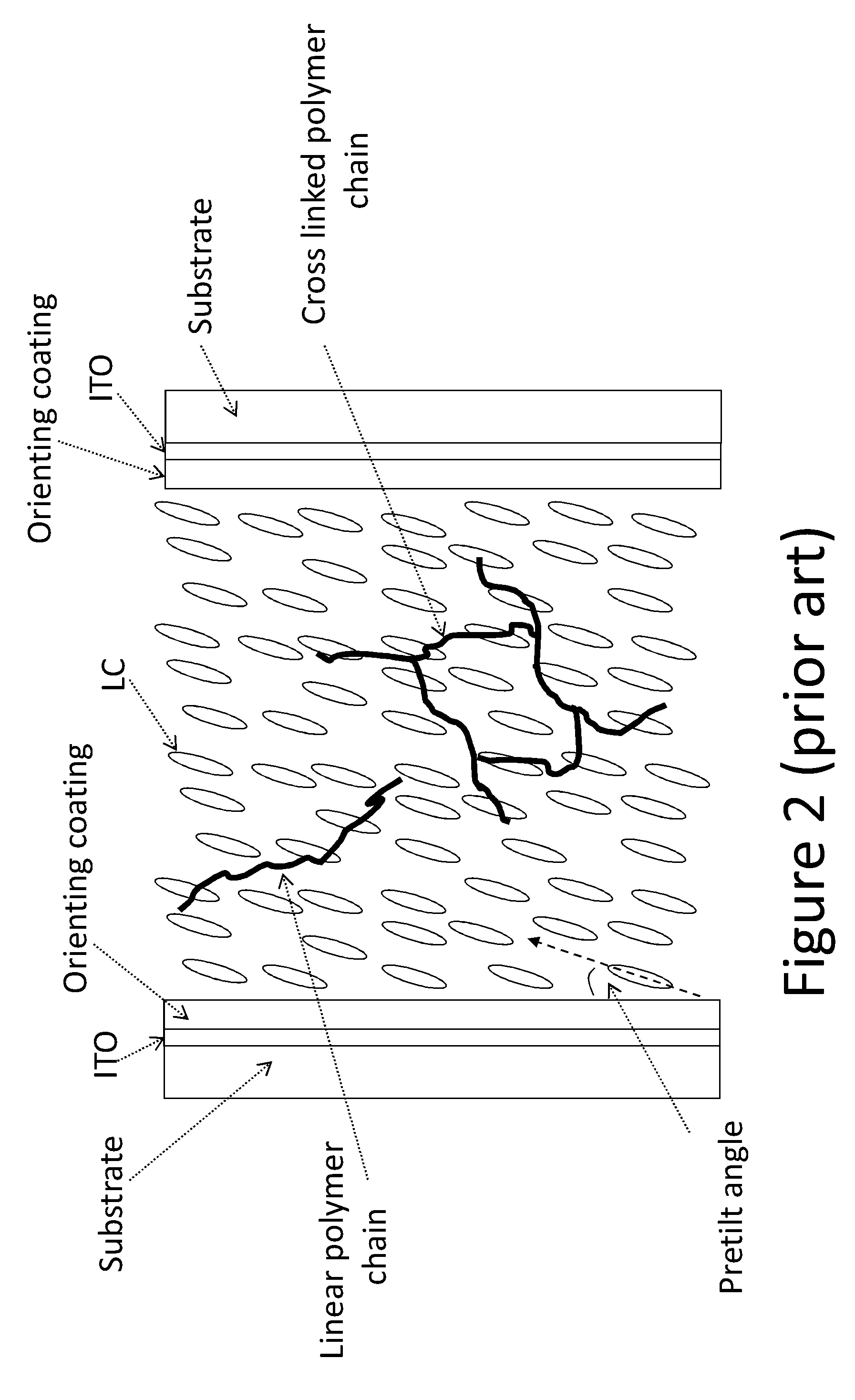Liquid crystal lens using surface programming
a surface programming and liquid crystal technology, applied in optics, non-linear optics, instruments, etc., can solve the problems of non-reliable rubbing process, damage to the cell, non-uniformity and dust, etc., to improve the response of the lens to the control field, reduce aberration, and improve the effect of the control field respons
- Summary
- Abstract
- Description
- Claims
- Application Information
AI Technical Summary
Benefits of technology
Problems solved by technology
Method used
Image
Examples
Embodiment Construction
[0033]FIG. 3A schematically demonstrates the key principle of fabrication of an oriented LC cell (10) filled with surface polymer stabilized (optionally inter diffused) liquid crystal (11a). As shown in FIG. 3B, such a device has after its programming a programmed LC orientation in the ground state, namely without the typical electric field excitation. For simplicity of illustration, this orientation is shown as being of a spatially uniform direction, however, to form a lens, beam steering device or other imaging system optics, it will be appreciated that it is of a predetermined spatial profile.
[0034]The surface “programmable” layer (16) is preferably chosen out of materials which have good orientational correlation (before and after the polymerization) with LC molecules. Examples of such materials can be different types of poyimides as used for rubbed alignment layers, reactive mesogenes (11b), etc.
[0035]The cell (10) shown here has no built-in electrodes to enable the use of vari...
PUM
| Property | Measurement | Unit |
|---|---|---|
| electric | aaaaa | aaaaa |
| magnetic | aaaaa | aaaaa |
| optical properties | aaaaa | aaaaa |
Abstract
Description
Claims
Application Information
 Login to View More
Login to View More - R&D
- Intellectual Property
- Life Sciences
- Materials
- Tech Scout
- Unparalleled Data Quality
- Higher Quality Content
- 60% Fewer Hallucinations
Browse by: Latest US Patents, China's latest patents, Technical Efficacy Thesaurus, Application Domain, Technology Topic, Popular Technical Reports.
© 2025 PatSnap. All rights reserved.Legal|Privacy policy|Modern Slavery Act Transparency Statement|Sitemap|About US| Contact US: help@patsnap.com



